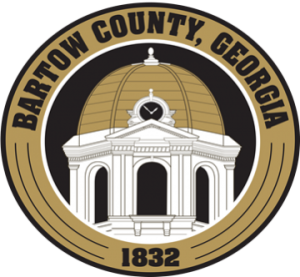The average lifespan for flowering cherry trees in Georgia is about thirty years. As they begin to reach this advanced age for cherries, we begin to see a cascading set of problems that ultimate lead to the decline and death of a tree. Typically, we get calls at the Extension office once the tree begins to show symptoms of branch dieback in the canopy. However, by the time a client notices branch dieback in the tree, it is typically in a downward spiral of decline.
If you’ve ever watched your cherry trees slowly shed their leaves during summer, then they probably had a common leaf disorder known as shot-hole disease, which causes tiny holes in the leaves. The exact cause of shot-hole disease is thought to be a combination of a bacterium and a fungus. This is one of the most common diseases of ornamental flowering cherries and even edible cherry varieties. Certain flowering cherry tree trees such as ‘Yoshino Cherry’ are highly susceptible to this disease. This disease also affects related landscape shrubs such as the cherry-laurel. Spraying trees this late in the season will not provide any benefit, since the trees will essentially go into an early fall dormancy.

By itself, shot-hole disease is not considered lethal to cherries trees. However, it does make the appearance of the tree look bad and sometimes can cause most of the leaves to drop in mid-summer. This premature leaf drop can be stressful, but is tolerated quite well by trees that are young and otherwise healthy. Some years will be worse than others, depending on the weather. This fungal disease favors warm, wet spring weather, which is common in Georgia. This year appears to be one of those years where the weather has made the disease more prevalent. Trees should leaf back out normally the following spring.
The problem with shot-hole disease is that if trees are prematurely defoliated year after year, then this increases the chances of other physiological disorders such as sunscald on the branches and stems of the tree that are exposed to more sunlight. Sunscald causes the bark to peel and crack, which opens the tree up to other secondary insect and disease problems as the tree ages. Another consequence of excessive sunlight exposure on stems and branches is the growth of lichens on the bark of the tree. Lichens are not harmful to trees, but they are an indication that the tree is stressed. We often get calls about lichens on older trees since they are one of the most obvious symptoms of tree decline, even though they are not the cause.
Another symptom of stress in cherry trees is oozing sap, also known as gummosis, from the main stems. There are several infectious diseases (fungal or bacterial cankers) that can result in gummosis. However, in most cases where a canker disease is concerned, the infected tree has been under some type of environmental stress. The presence of gummosis does not mean the tree will die and there are no effective treatments for these disorders. Minimizing tree stress is the key to prevention. Supplemental water during extended drought is important. Proper pruning, fertilization, and mulching trees can also minimize these stresses. Insects such as ants, wasps, and beetles are often attracted to rotting wood and sap. However, these insects are not directly harmful to the tree and are secondary to the problems listed above.
As all these stress issues begin to compound over time, the tree becomes more susceptible to lethal insects such as Asian ambrosia beetles, which tunnel into the heartwood of the tree. Unfortunately, there are no effective treatment options for ambrosia beetles once they are inside the tree. They are protected from exposure to pesticides underneath the bark layers. The tree will likely continue to decline and eventually die as a result of ambrosia beetles. Most of the chemicals we have today act more like repellents and are typically recommended for nearby trees that you might want to spray as a preventative measure. This will only slow down their activity and reduce the chances of them moving to other trees. Ambrosia beetles also introduce symbiotic “ambrosia” fungi into their galleries as a food source for developing larvae. Eventually, these fungi will infect the vascular system of the tree, ultimately clogging the flow of water and nutrients and further stressing the tree. Summer droughts can amplify these problems and the tree may suddenly die as a result.
Note that there are preventative fungicides that can be used to treat shot-hole disease. However, they must be applied in early spring each year to be most effective. It’s too late in the season this year to be of any benefit to the tree, as these leaves are already infected. A preventative treatment for shot-hole disease next spring might be a good choice to minimize future stresses and increase the longevity of your tree. Fungicides won’t completely stop the disease, but could help retain leaves longer in the summer and minimize some of the secondary stresses associated with this disorder. Most people will find that it just isn’t practical to spray large, mature trees every spring. However, young trees or specimen trees in your landscape might be worth the extra effort to control shot-hole disease for appearances and perhaps extend their longevity. If this is a recurring issue for your trees, you might want to consider replacing them with an alternative landscape tree in the future.
Paul Pugliese is the Extension Coordinator and Agricultural & Natural Resources Agent for Bartow County Cooperative Extension, a partnership of The University of Georgia, The U.S. Department of Agriculture, and Bartow County. For more information and free farm, lawn, or garden publications, call (770) 387-5142 or visit our local website at extension.uga.edu/bartow.
